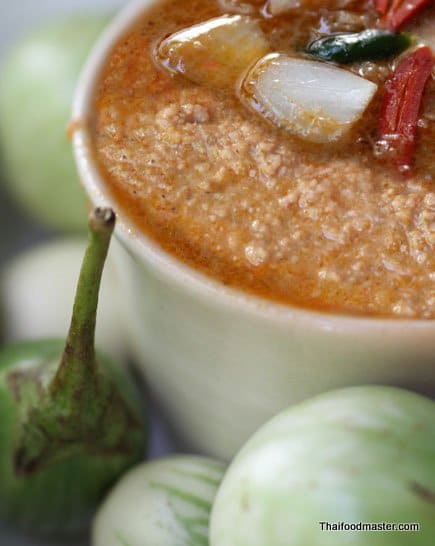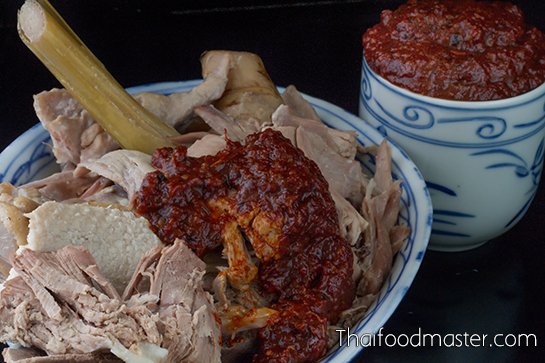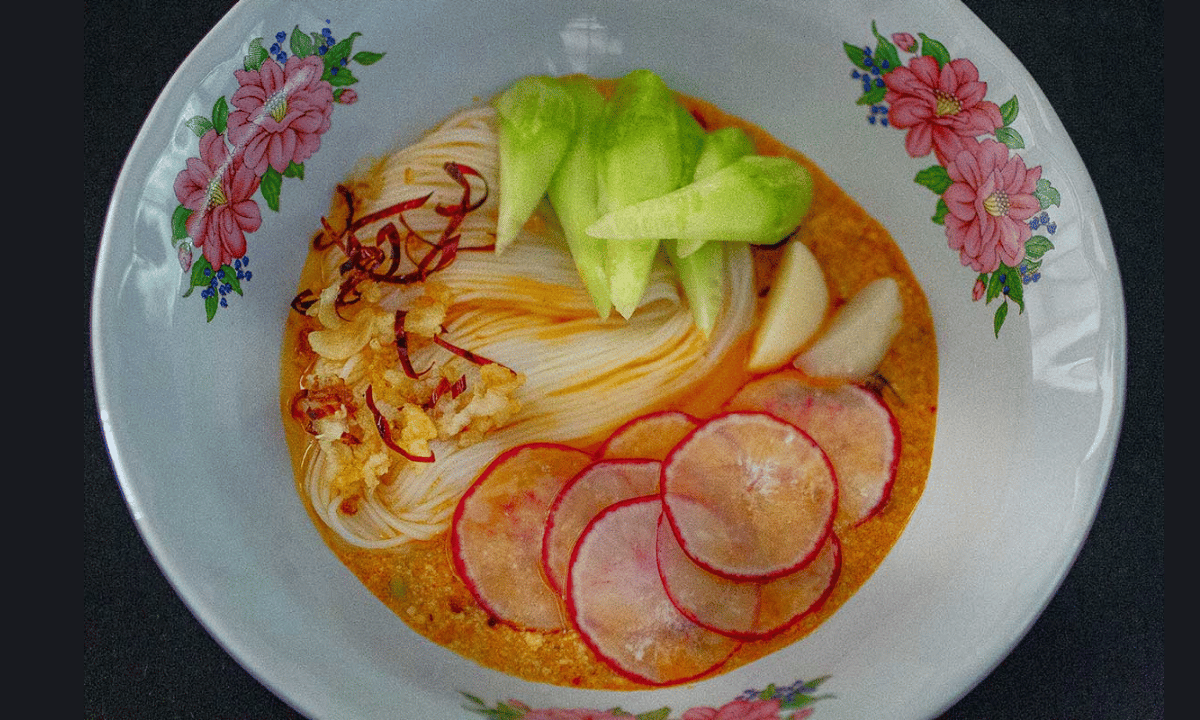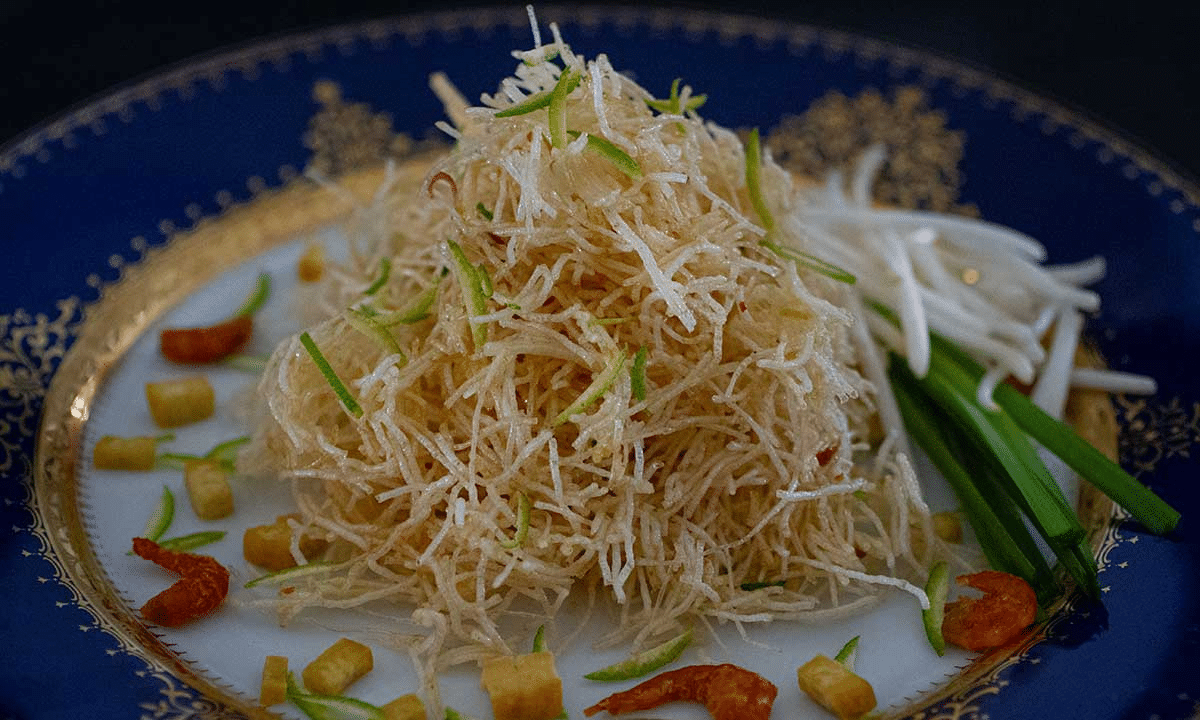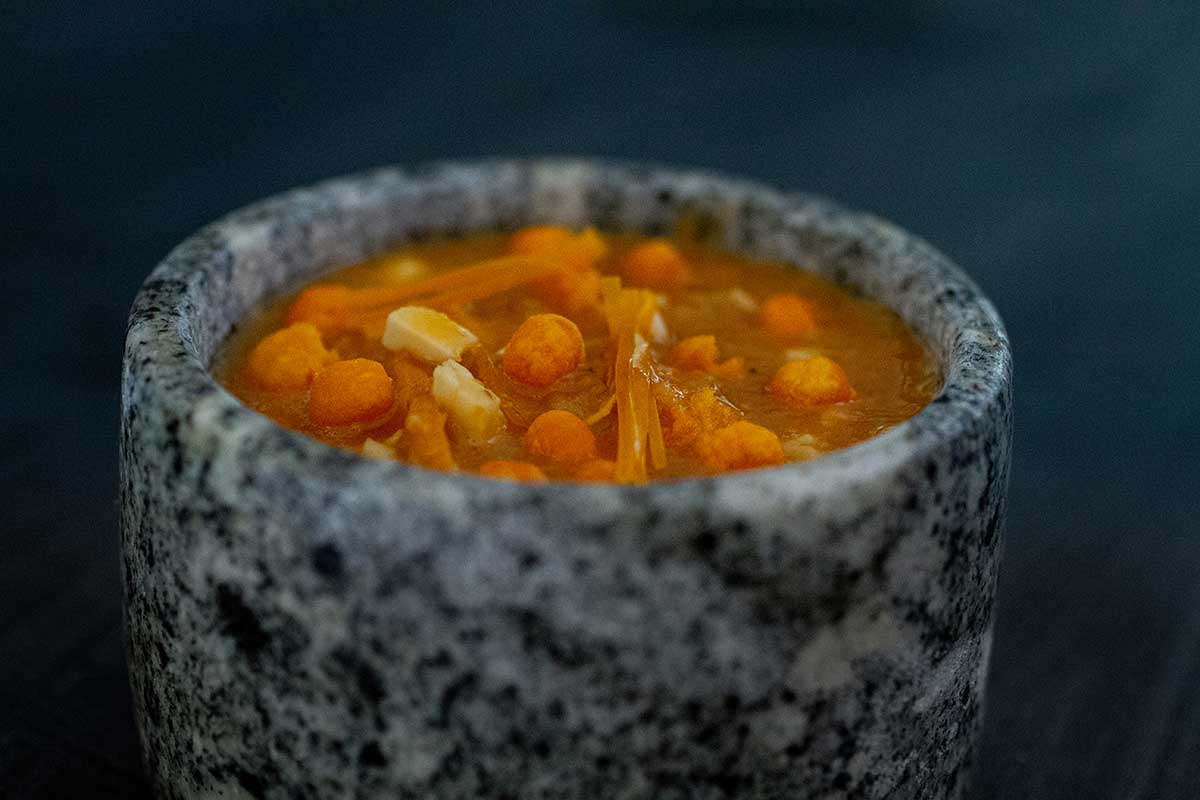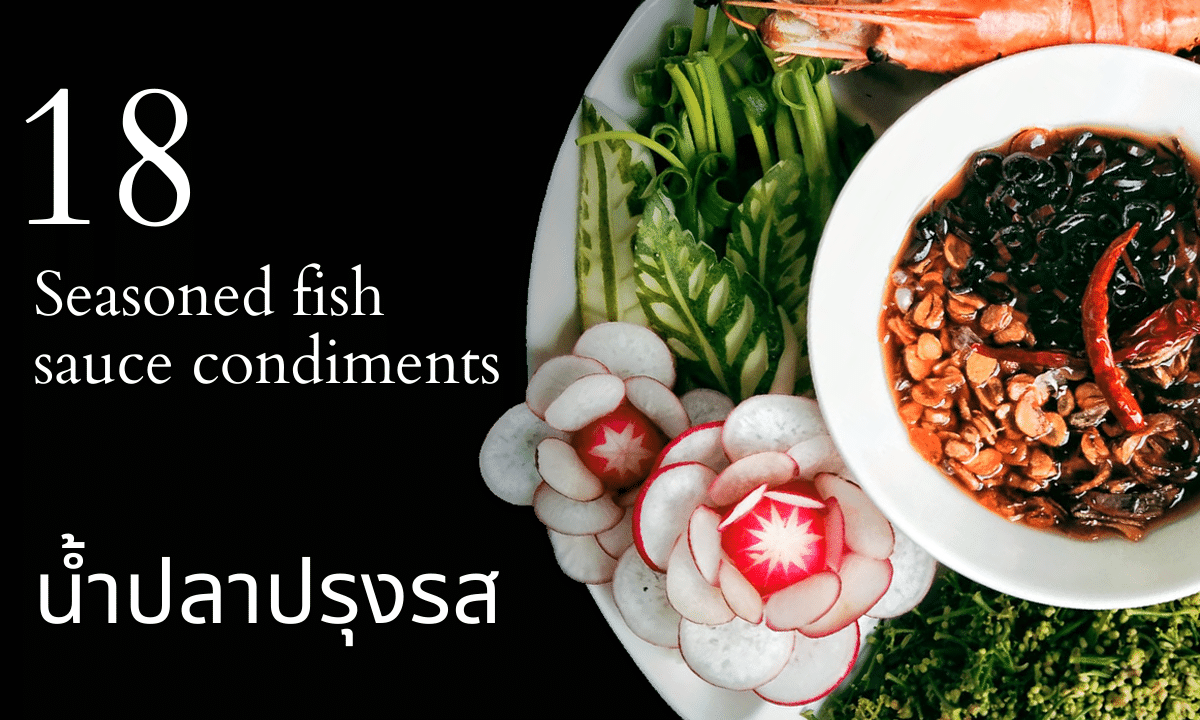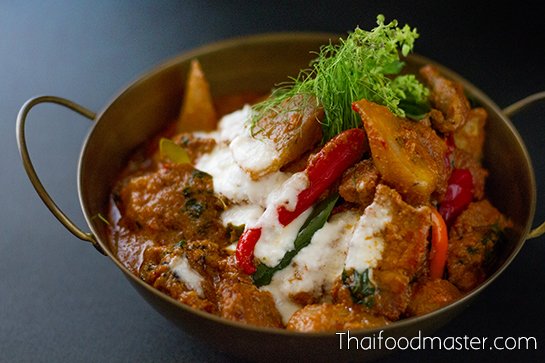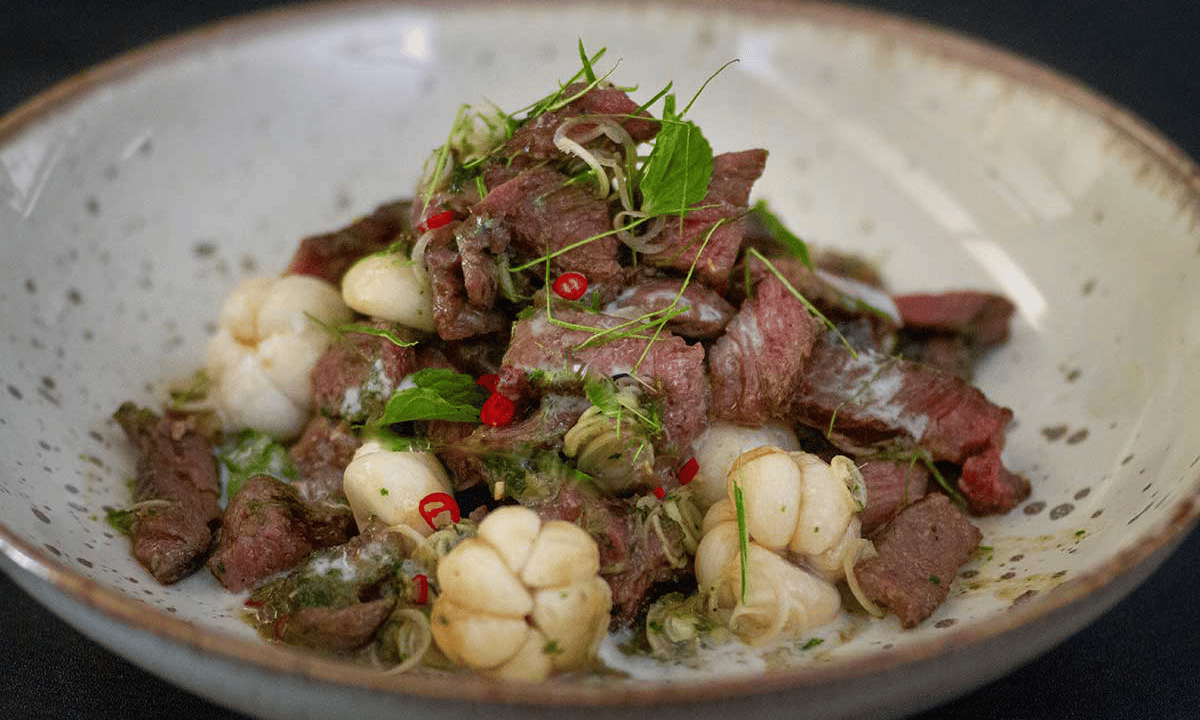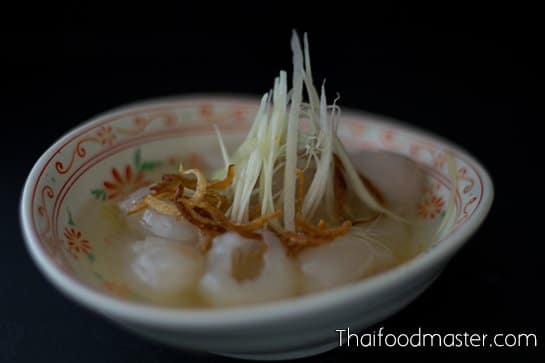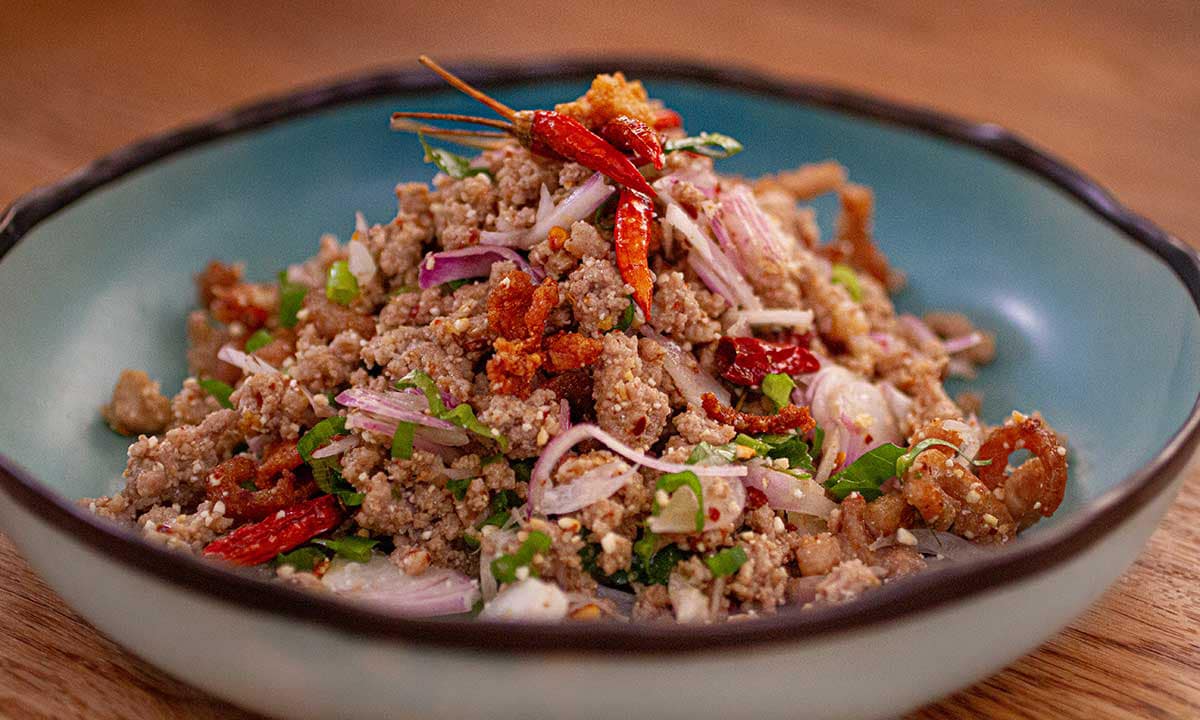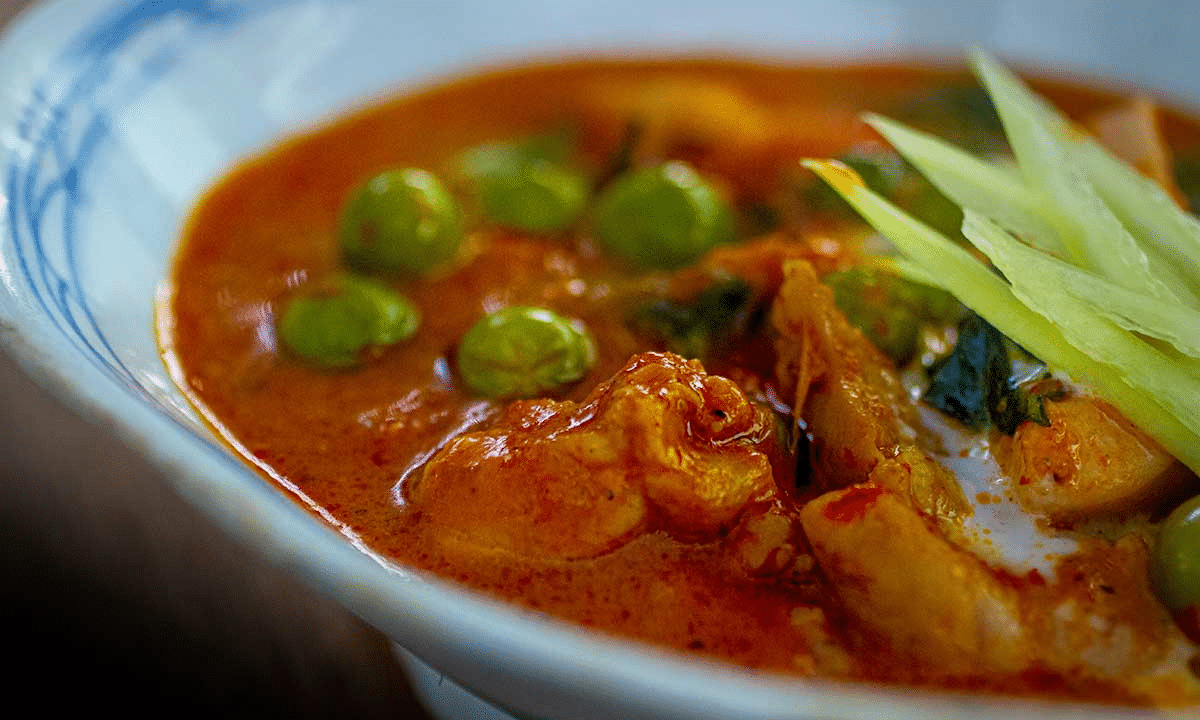
[expander_maker id=”3″]
The information on this website has been compiled from reliable sources, such as reference works on medicinal plants. It is not a substitute for medical advice or treatment and Thaifoodmaster does not purport to provide any medical advice.
Common names: Great morinda, Tahitian noni, Indian mulberry, Beach mulberry, Noni (Hawaii), Meng kudu (Malaysia), Ach (Hindu)
Local names: Mae Hong Son: แย่ใหญ่ (yaae yai), Northern: ตาเสือ (dtaa seuua) มะตาเสือ (ma dtaa seuua)
Morinda citrifolia is a dramatically foliaged evergreen shrub or small tree with a conical crown; it usually grows 2 – 6 metres tall, occasionally to 10 metres. The bole can be 12cm in diameter.
Noni has long had a reputation for its healing qualities. In recent years there has been an upsurge of interest in the nutritional value of its fruit for which it is widely cultivated, especially in Hawaii. It is both cultivated and harvested from the wild for its range of uses, especially as a nutritious food supplement, but also as a dye plant. It is also a very useful pioneer species for re-establishing woodland. Before the introduction of synthetic dyes (such as alizarin) the red dye from the rootbark of Noni was an important commodity. There used to be plantations in coastal areas of northern Java and adjoining islands. Nowadays, cultivation for the dye is restricted to areas where traditional textile dyeing is still important, e.g. In the production of high quality batik on Java. [1]Useful tropical plants
Edible Uses
The unripe fruit is used in Issan food for pounded salads. In Indian cooking in sambals and curries. Despite the smell of putrid cheese when ripe, the fruits are eaten raw or are prepared in some way. The ripe fruit is made into a beverage with sugar or syrup. The ovoid fruit is 3 – 10cm long and 2 – 3cm wide. [2]Useful tropical plants
The juice of the fruit is used in Australian bushfoods for dressings, sauces and marinades. [3]Useful tropical plants
Young leaves and blanched shoots – raw or steamed, added to haaw mohk, curries etc. They contain 4.5 – 6% protein. The leaves are a rich source of vitamin A. [4]Useful tropical plants
The seeds of some forms are roasted and eaten. [5]Useful tropical plants
Medicinal
Most parts of noni have been widely used medicinally since ancient times, . It was first mentioned in literature in China during the han dynasty (206BC – 23AD). Nowadays, single trees are encouraged or cultivated in gardens mainly for medicinal purposes.
The curative properties of the plant parts are ascribed to the presence of medicinally active anthraquinone derivates. The fruit contains rancid smelling capric acid and unpleasant tasting caprylic acid. It is thought that antibiotically active compounds are present. [6]Useful tropical plants
The roots are febrifuge, tonic and antiseptic. They are used to treat stiffness and tetanus and have been proven to combat arterial tension. An infusion of the root is used in treating urinary disorders. The bark is used in a treatment to aid childbirth.
Externally, the root is crushed and mixed with oil and is used as a smallpox salve. An infusion of the root bark is used to treat skin diseases.
The roots are harvested as required and used in decoctions. [7]Useful tropical plants
The wilted or heated leaf is applied as a poultice to painful swellings in order to bring relief. A poultice of the leaves is applied to wounds or to the head in order to relieve headaches. The crushed leaves, mixed with oil, are applied to the face for the treatment of neuralgia.
The leaves are harvested as required during the growing season. [8]Useful tropical plants
The fruits are used as a diuretic, a laxative, an emollient and as an emmenagogue, for treating asthma and other respiratory problems, as a treatment for arthritic and comparable inflammations, in cases of leucorrhoea and sapraemia and for maladies of the inner organs.
Liquid pressed from young fruit is snuffed into each nostril to treat bad breath and raspy voice. It is also used in the treatment of mouth ulcers, haemorrhoids, hernia or swollen testicles, headaches, pain caused by barb of poisonous fish, removal of a splinter, childbirth, diabetes, diarrhoea and dysentery, fever, intestinal worms, filariasis, leprosy, and tuberculosis.
Young fruits are used to treat high blood pressure. The fruits can be harvested ripe or unripe and are sometimes charred and mixed with salt for medicinal use. [9]Useful tropical plants
The roots, leaves and fruits may have anthelmintic properties. In traditional medicine the parts used are administered raw or as juices and infusions or in ointments and poultices. [10]Useful tropical plants
[/expander_maker]
References

